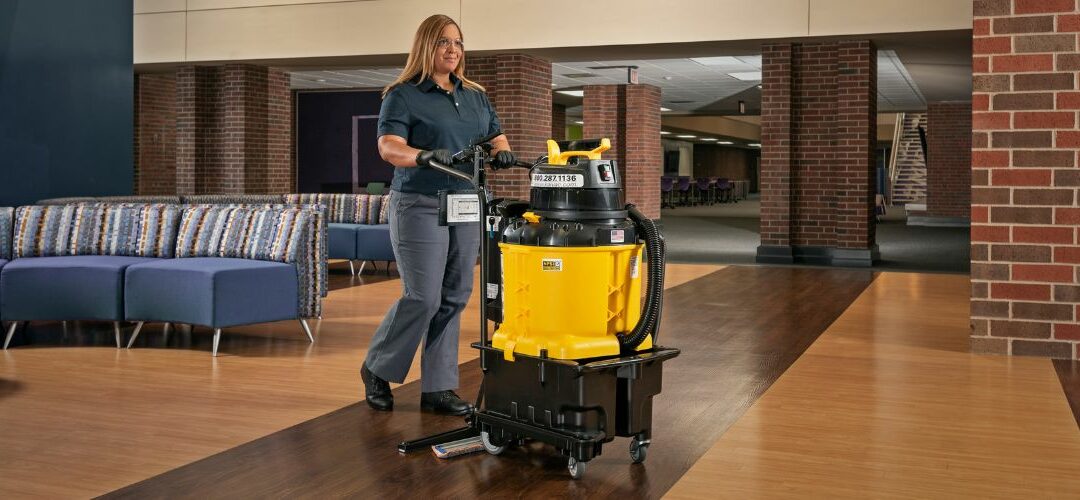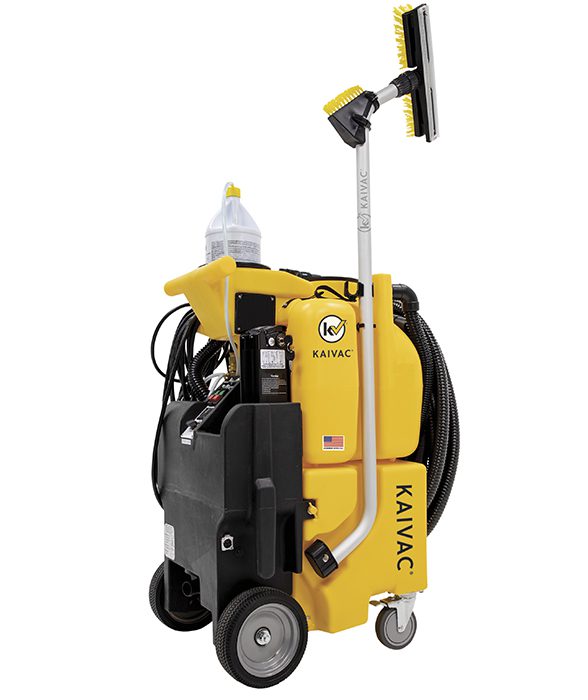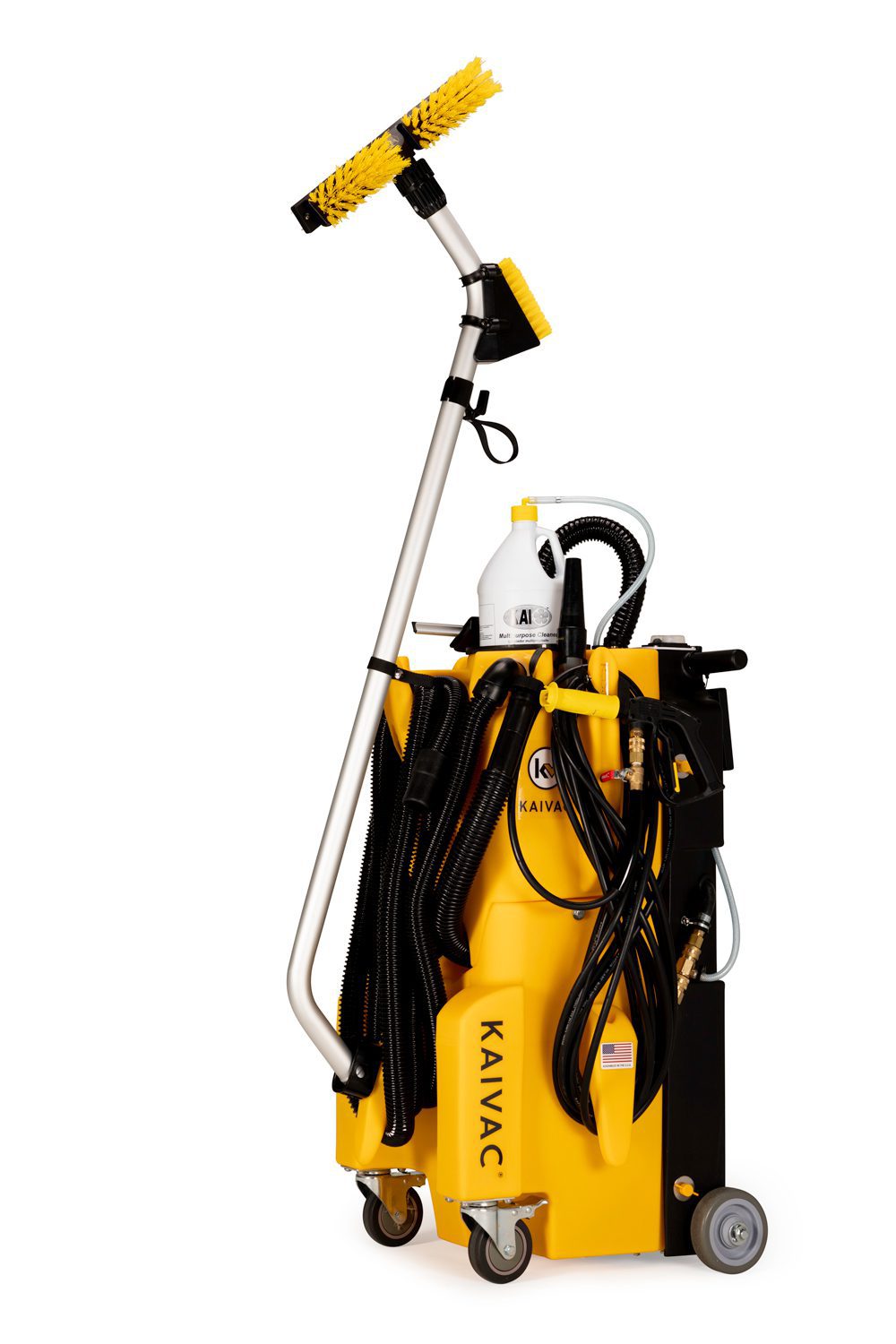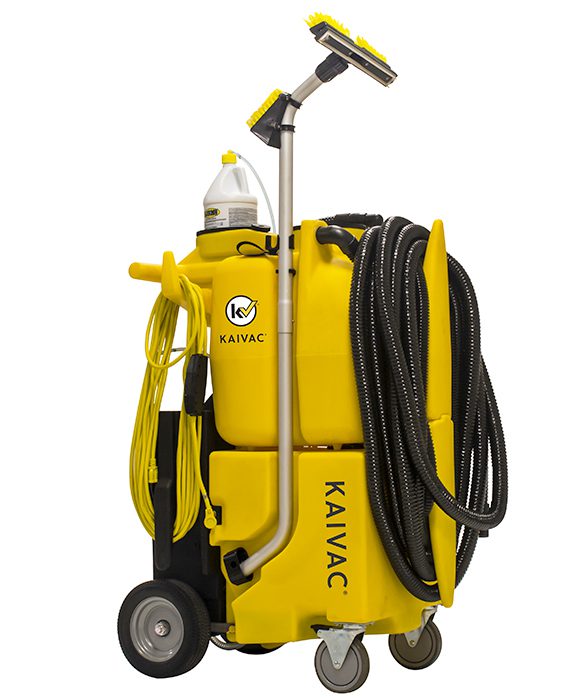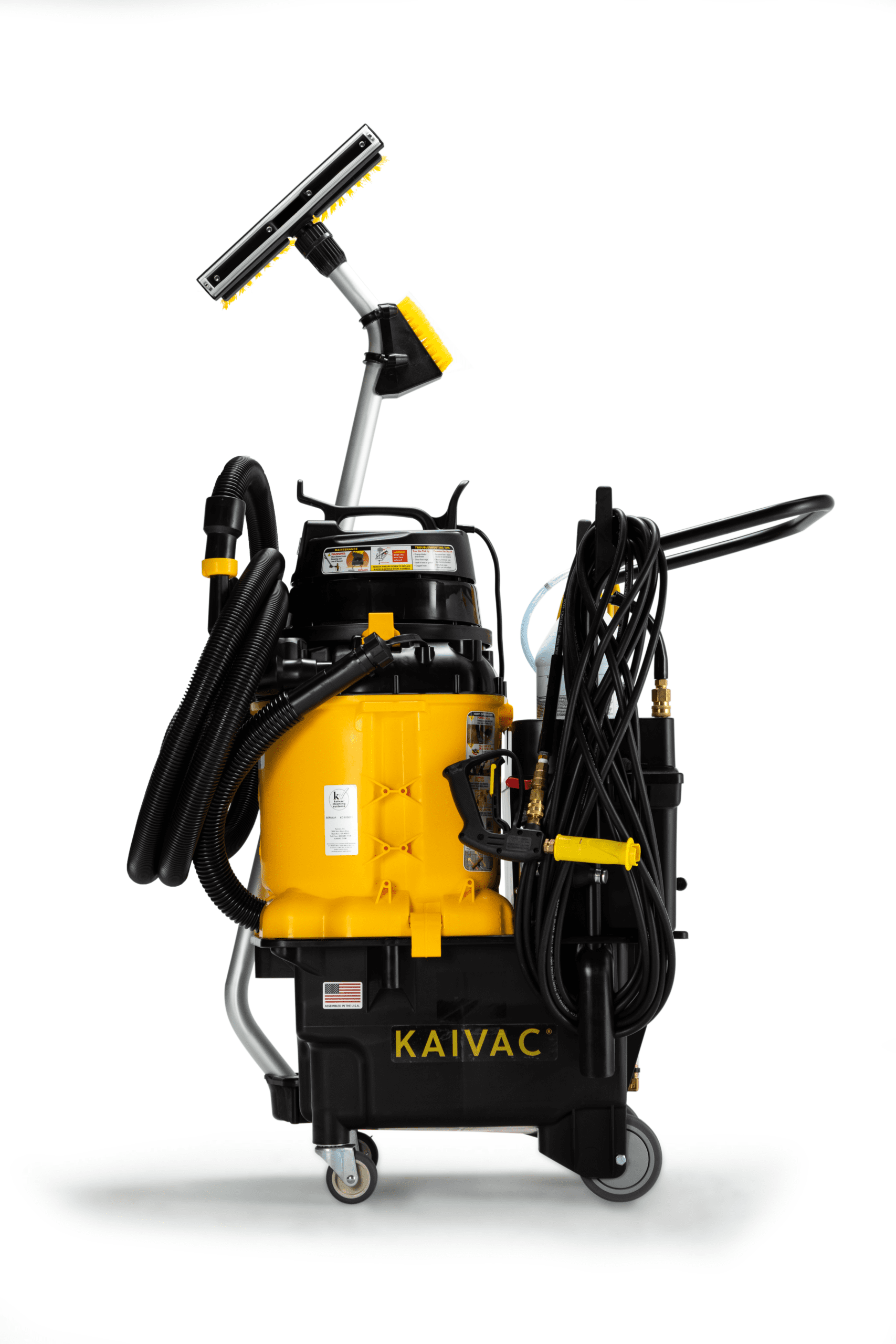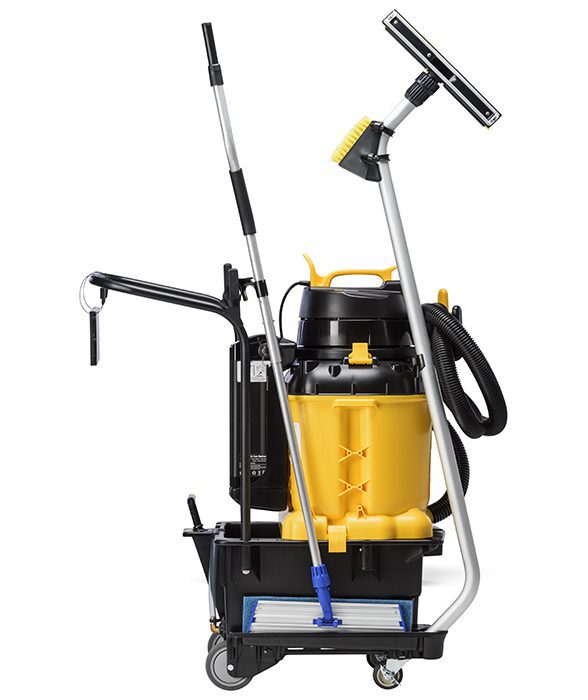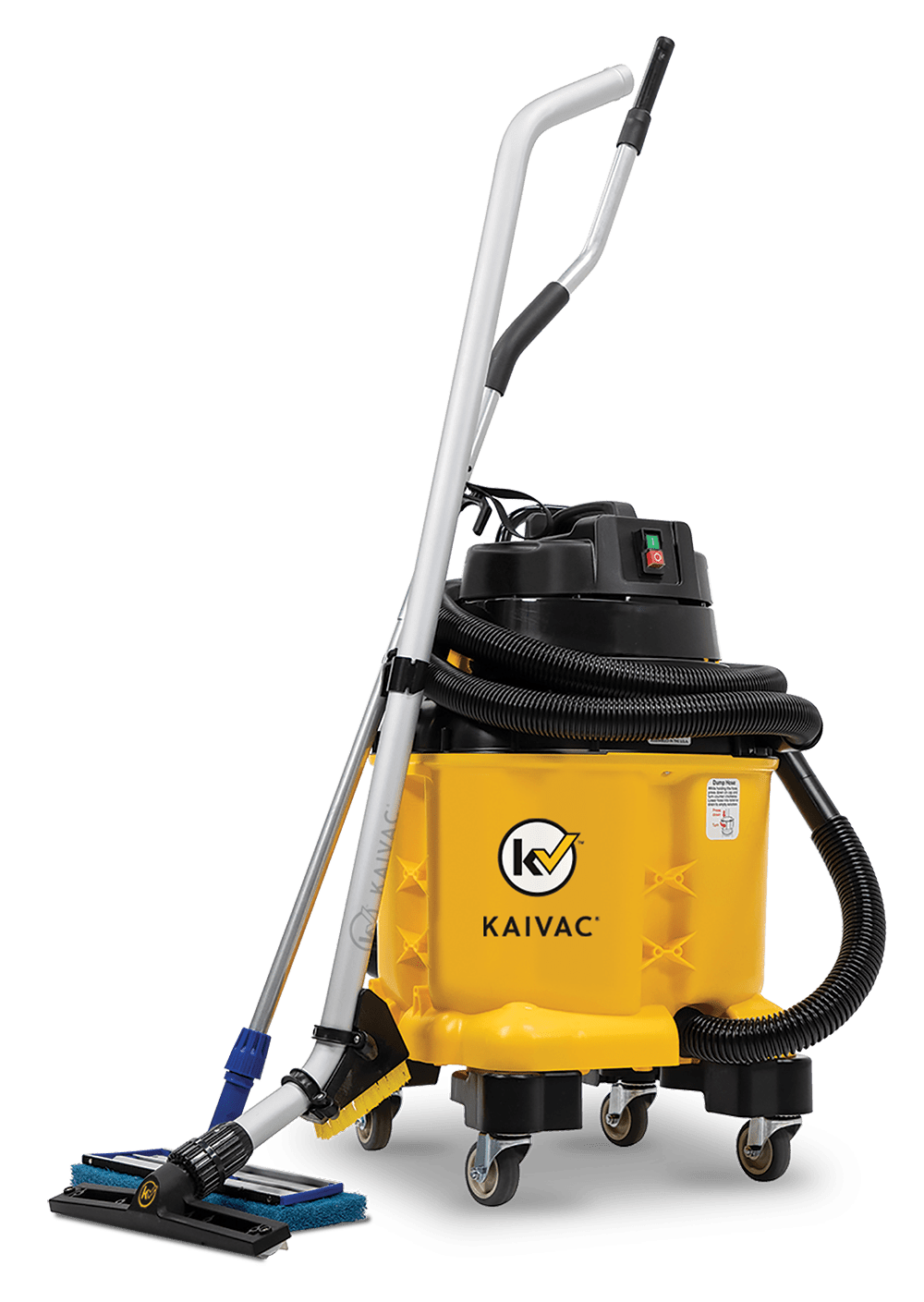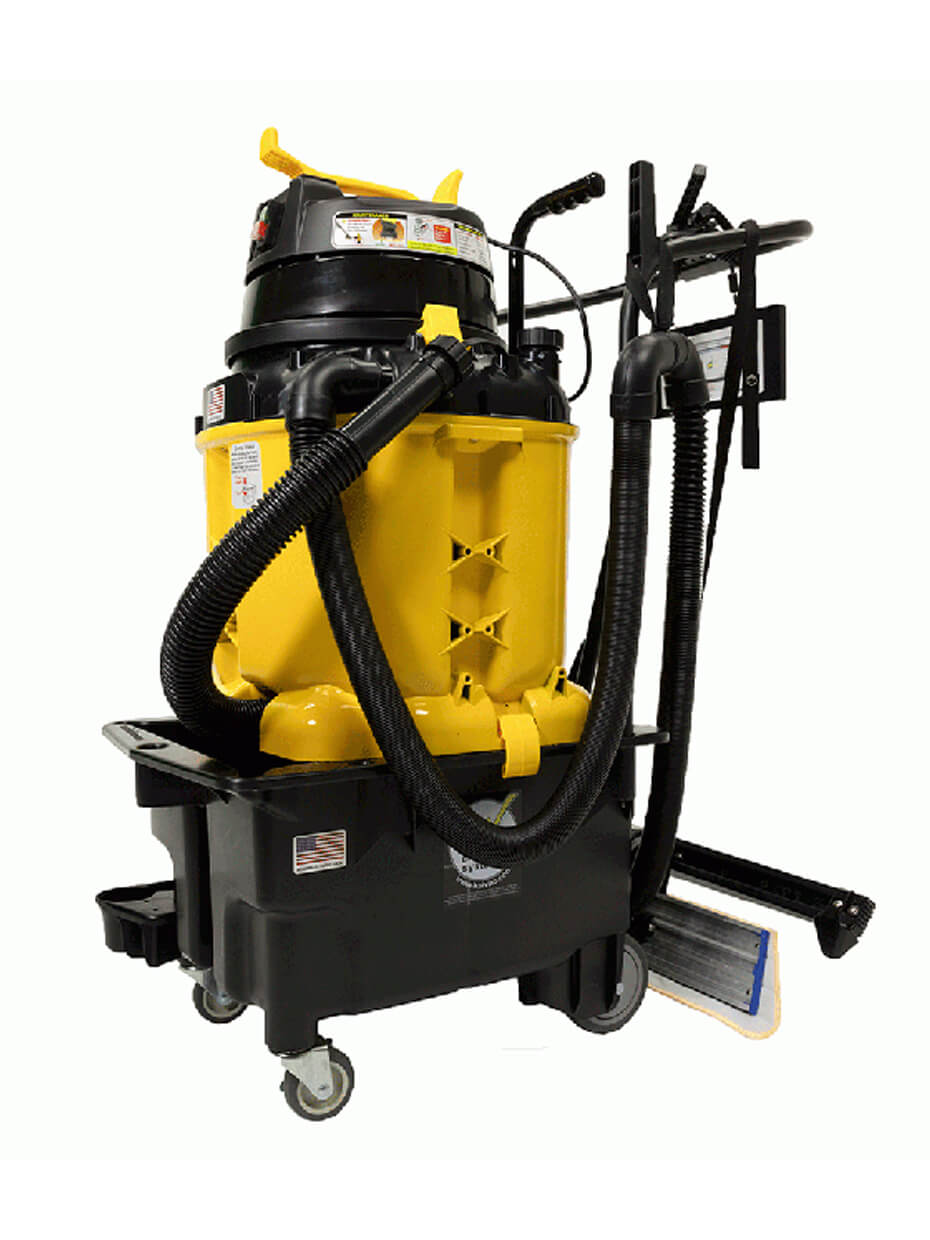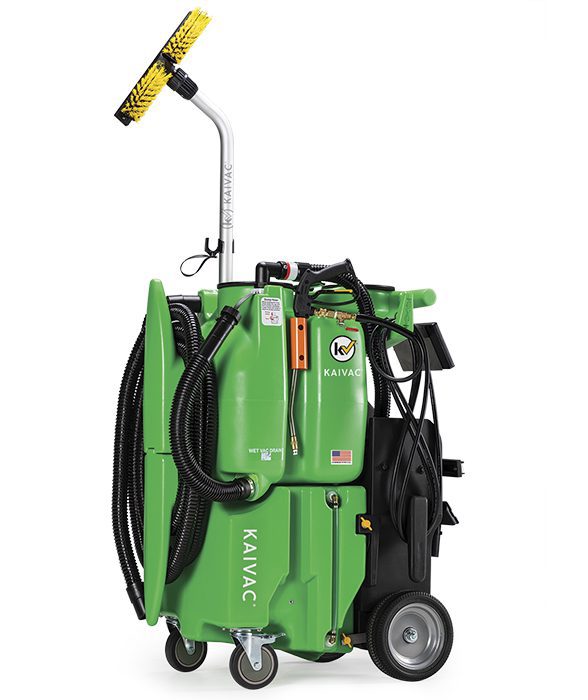What kind of equipment do you use to clean large areas of hard surface flooring? While most organizations might choose a floor cleaning machine for the job, far too many still send their team out with nothing but a bucket and mop. This might seem like an easy, inexpensive choice for cleaning lobbies, hallways, or cafeterias, but mops and buckets cost your organization far too much in supplies, labor, and reputation.
Here’s how much cleaning wide areas of hard surface floors with a mop really costs and how to slash those numbers with the AutoVac Stretch™ from Kaivac.
The Hidden Cost of Mops
At first glance a mopping program seems fairly cheap. A closer look reveals the hidden costs. Turns out constantly refreshing consumables for an inefficient bucket and mop costs far too much.
Refreshing Consumables Adds Up Fast
Buying a bucket and mop will not bust your budget, but mop heads wear out, mop handles break and buckets crack and get smelly. The cost of refreshing these consumables over and over adds up. The expenses are annoying for sure, but the truly aggravating fact is mops and buckets don’t actually clean anything.
Cleaning is the full removal of dirt, soils, and pathogens. Mops, however, leave plenty behind on your hard surface floors. Constantly re-buying consumables for an outdated, unhygienic program doesn’t make good business sense.
Buying cleaning chemicals for a mopping program also gets expensive, particularly if your team is eyeballing dilution ratios and consistently adding too much. Yes, floor cleaning machines also use chemicals (although some are so advanced they can clean using only water). But these tools are designed for efficiency making it easy to fully clean a hard surface floor with just the right amount of chemical and water.
An advanced floor cleaning machine like the AutoVac Stretch takes that benefit even farther. Its unique filtering system allows the machine to get the job done with 75% less water and 66% less cleaning chemical. This saves both precious resources and operation dollars.
Inefficient Mops Drive Labor Costs Up
The biggest cost of mops comes from their inefficiency. Mops are heavy, cumbersome, and as a result, very slow to use. For example, a worker armed with a 34-ounce string mop and a dual-chamber bucket can “clean” 8,345 square feet of hard surface floor an hour, according to the Official ISSA Cleaning Times.
But what an arduous hour that would be, full of bending, reaching, wringing, pushing, pulling, and then stopping to change out water.
A more advanced 16-inch flat mop performs a little better, cleaning 8,571 square feet of hard floor an hour. But even that tool relies on your worker’s backbreaking manual labor night after night. This experience will not engage or delight your cleaning staff and may lead to higher turnover.
The walk-behind AutoVac Stretch offers a better solution. The same filtering system that lets the AutoVac Stretch conserve water and chemical also gives it an expanding cleaning range, so workers don’t have to stop mid-job and refill. This means an employee can remove dirt and soils from a whopping 25,000 square feet of hard surface floor an hour. That’s more square feet per hour than a much more costly 32-inch ride on autoscrubber delivers.
Return on Investment
These labor savings allow the AutoVac Stretch to pay for itself quickly. Every company’s return on investment (ROI) will differ depending on a number of variables. That includes the number of locations, the square footage of hard surface floors, and the hourly rate for labor in your market. Check out this calculator tool to estimate your individual organization’s savings.
Saving on labor costs is great but engaging your workers in a tight employment market is priceless. There is nothing exciting about wheeling a bucket and mop to a big job. Investing in hard surface floor cleaning tools like the AutoVac Stretch, however, lets staff know their work is important and their contribution valued.
Find out more on engaging workers and saving money by clicking here.
